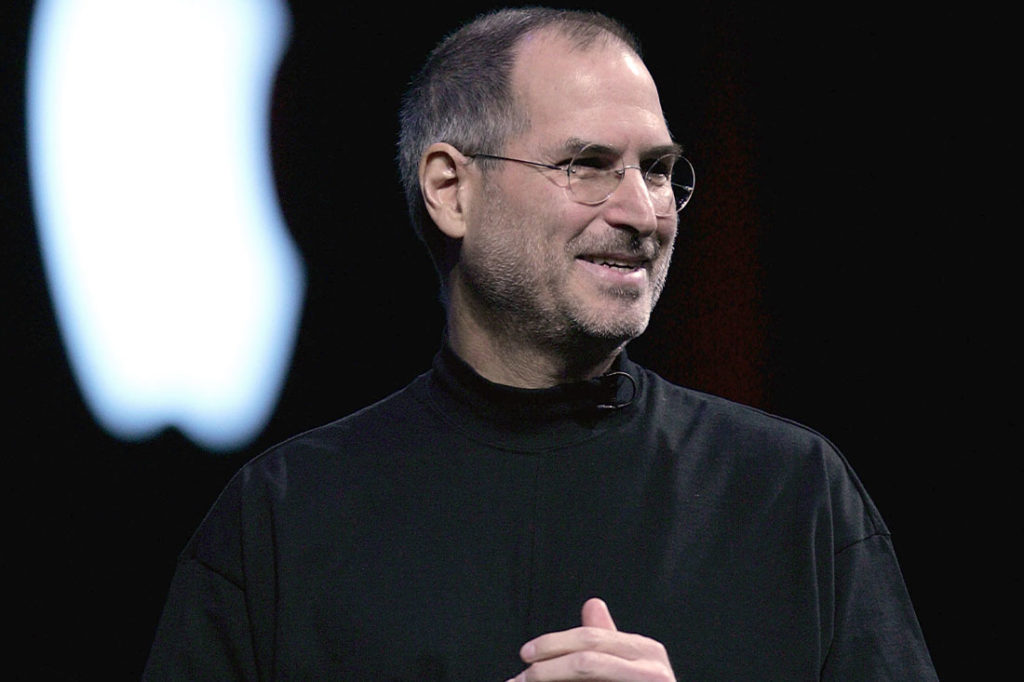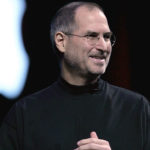There’s a scene near the beginning of the film Steve Jobs, in which the titular character, played by Michael Fassbender, is about to go on stage and introduce the world to the Macintosh. It’s a moment he hopes will usher in the point-and-click future of personal computing and change the arc of history forever. But before he takes the stage, Jobs is fixated—absolutely obsessed—with a single, tiny, seemingly extraneous detail.
It’s something that will account for mere seconds in the hour-long presentation he’s about to deliver. He wants to make sure that when he’s on stage, this new computer he’s unveiling will be able to say “Hello.”
Jobs berates his employees. He threatens some. He humiliates others. He tells them that if the computer can’t greet him, he’ll cancel the entire presentation. He seems like a petulant child.
The movie, based on author Walter Isaacson’s acclaimed biography, is generally regarded as the most accurate, rounded depiction of Jobs in cinema. (There have been two other films about his life: 1999’s Pirates of Silicon Valley and 2013’s Jobs, starring Ashton Kutcher.) But whether the real-life backstage interaction went like that or not, the moment depicts something integral—and very true—about Steve Jobs. He wants the computer to say “Hello” because that’s the way he’s imagined it. This is his vision.
Jobs was known to exhibit, on occasion, a notoriously caustic demeanor. It’s also not completely clear from the outside what exactly he did. After all, he wasn’t an engineer. He didn’t write code. He convinced Steve Wozniak to do seemingly all of the technical work as their careers were budding. But in the span of 35 years—from the 1970s through the first decade of this century—he became an American icon, one of the most important innovators in human history. In that time, he famously co-founded Apple in his parents’ garage, got himself kicked out of the company less than 10 years later, then returned to rescue Apple from the brink of extinction another decade after that. Before he died in October 2011, following a relapsed pancreatic neuroendocrine tumor, he reshaped the company into the world’s most valuable. Along the way, he also helped start the digital animation company Pixar.
Naz Beheshti, an executive wellness coach and founder of Prananaz, started her career as Jobs’ executive assistant during the development of the iPod. She calls him a “visionary” who enticed the people around him into believing in his dreams. “His team sometimes doubted,” Beheshti says, “but his confidence, passion, perseverance and focus made the impossible possible.” That’s what he did. He imagined. And he imagined more intensely, with more passion, than anyone else.
Eventually, by the end of that scene in Steve Jobs, after so much furious dialogue, one of the employees Jobs was cruelest to figures out a way to get the Macintosh to say, “Hello” at the presentation. The moment serves to demonstrate not only the impatience and perfectionism of Jobs, but also the engine propelling all that he did: the power of his imagination.
A decade removed from his death, here are five lessons we can still glean from the imagination of Steve Jobs.
Lesson 1: Imagine something more than money.
Sure, Jobs was a natural salesperson. He understood, almost intuitively, what the American public would be willing to buy. Before he started Apple with Wozniak, as a teenager Jobs sold illegal “blue boxes”—machines that could mimic telephone tones and allow users free long-distance calls—that Wozniak built. Later in life, Jobs would say that if not for those blue boxes, “there wouldn’t have been an Apple.”
But even then, money wasn’t the point. More than anything, the two men enjoyed using electronics to outsmart the established businesses that dominated the telephone industry. In fact, at various times in his life, Jobs lived in considerable poverty. In his viral 2005 commencement speech at Stanford University, Jobs told the audience that after he dropped out of Reed College, he slept on the dorm-room floors of his friends, recycled Coke bottles for money, and ate free meals at the local Hare Krishna temple. At one point he lived in a commune in Oregon. At another he lived in the shed in his parents’ backyard. He told people that he and Wozniak invented the Apple not to get rich, but because they wanted a practical personal computer.
Lesson 2: People don’t know what they want until you show it to them.
It seems logical that, because you know yourself better than anyone else, you’d also know better than anyone else what you might like. But that just isn’t the way our brains work. Most of us possess a remarkably poor ability to imagine something that doesn’t exist in the world but would change our lives dramatically.
No focus group would have asked for rounded corners on the windows of a personal computer operating system, something that has become a hallmark of Apple products for 40 years—so much so that most of us don’t even notice them anymore. No survey could have conjured the sleek design and satisfying interface of an iPhone screen or the intuitive search functions of an iPod. In the early 2000s, at the height of Napster and music piracy, an entire industry of musicians and record executives—and millions of illicit consumers—failed to imagine a way to download songs safely, easily and legally. Then came iTunes.
“Our job,” Jobs once said, “is to figure out what they’re going to want before they do.”
Lesson 3: Simplicity is sophistication.
Apple’s first marketing brochure in 1977 extolled the virtues and elegance of making something simple. “Simplicity,” the brochure headline read, “is the ultimate sophistication.” This has been the underlying axiom of the company—and the tenet driving so much of Apple’s design—ever since.
Even today, the products retain many of the simple concepts Jobs valued in the early days. Point and click. Drag and drop. No visible screws. Clutter-free visuals at every level, even the walls of the retail stores.
Of course, simplicity isn’t as simple as it sounds. To make a thing truly simple, truly intuitive, you must understand each part of that thing on a deep level. “In order to eliminate screws, buttons, or excess navigational screens,” Isaacson wrote, “it was necessary to understand profoundly the role each element played.”
But the idea of simplicity didn’t just apply to the products or the user experience. The company itself needed to focus, to eliminate conceptual clutter. When he returned to Apple in 1997, Jobs famously slashed the number of computers the company was making, insisting that they should instead focus on a few products, and making them both extraordinary and extraordinarily simple.
Lesson 4: Sell it yourself.
In the early 1990s, during the period when Jobs was away from Apple, he gave a short lecture to a small gathering of graduate students at the Massachusetts Institute of Technology, then opened the floor to questions. In a rarely seen video from that day, the insightful students bombard him with inquiries about every stage of his career up to that point—and Jobs is surprisingly frank about both his successes and his failures.
One of the lessons he’d learned over the years, he explained, was that an innovative company has to sell the innovations directly. That had been one of Apple’s mistakes: A salesperson at a retail big-box store probably wouldn’t understand all the technical and stylistic advantages of an early Macintosh.
“If a new product comes out, you’re lucky if you can find somebody at the computer store that even knows how to demo it,” Jobs told the MIT students. “So the more innovative the product is, the more revolutionary it is and not just an incremental improvement, the more you’re stuck.”
This was nearly 10 years before the first Apple retail store opened in suburban Virginia. Now there are more than 500 locations around the world.
Lesson 5: It’s not for no reason.
Jobs imagined something bigger than any product. Something more than the businesses that would become his legacy. He imagined a different way of living. Critics and commentators tend to focus on his flaws, on his interpersonal interactions, on his harsh approach to management. And those parts of his life certainly make for compelling drama. But the truth is what Jobs imagined was so clear to him that he seemed to have little patience for anyone who didn’t buy into his vision of a simpler world.
He knew it was important that an entity like Microsoft not monopolize the entire computer industry. He knew it was important that technology not pose intimidating challenges to the everyday consumer. He knew it was important to inspire people to, as Apple’s 1997 commercials implored, “think different.” Those ads—the first campaign after Jobs returned to the company—included images of Albert Einstein and Bob Dylan and Martin Luther King, Jr. and Muhammad Ali and Mahatma Gandhi and Amelia Earhart and Pablo Picasso. Creators, thinkers, iconoclasts.
From the beginning of his career until his death, Jobs asked us all to dream. He asked us to create, to rebel, to change the world. More than anything else, he asked us to imagine.
This article originally appeared in the November/December 2021 Issue of SUCCESS magazine. Photo © Justin Sullivan/Getty Images










